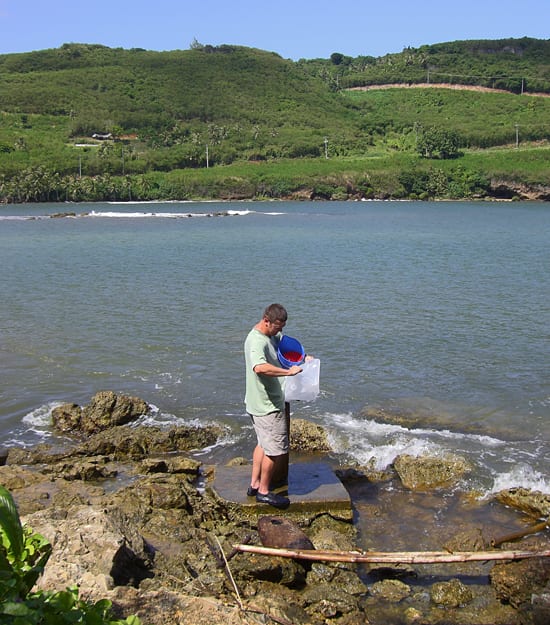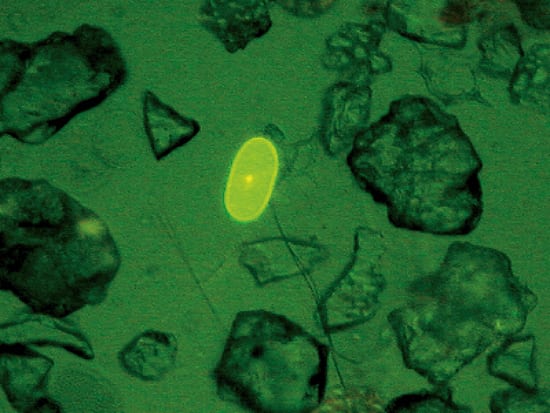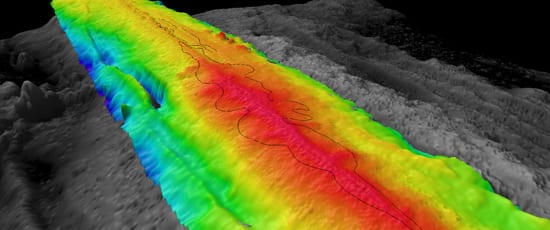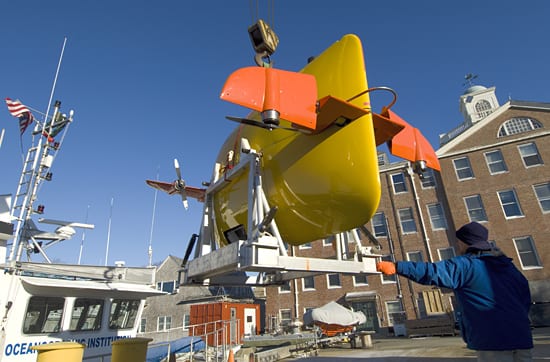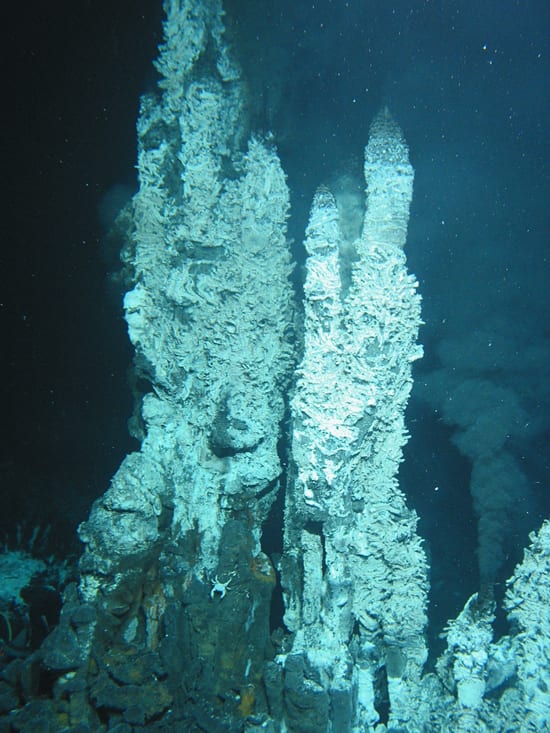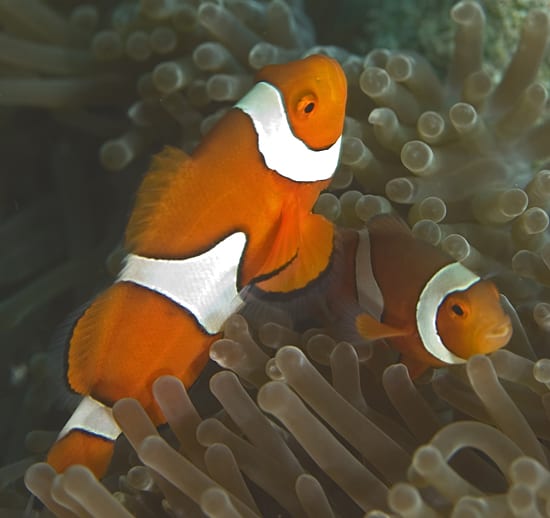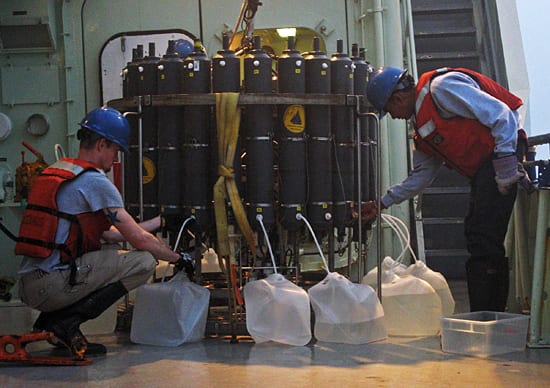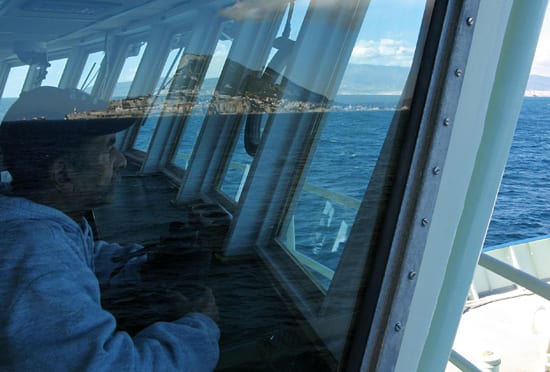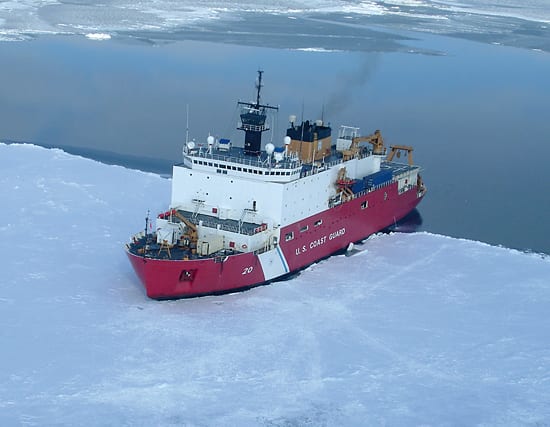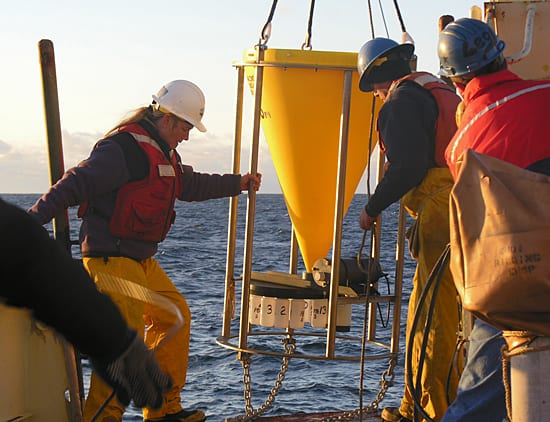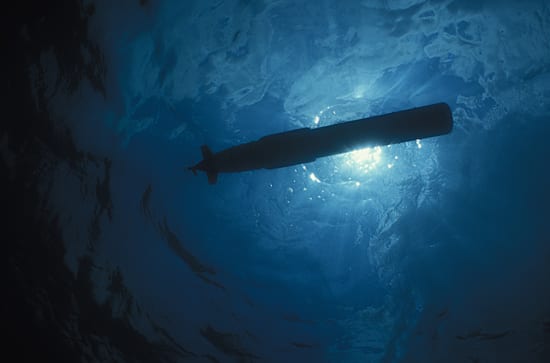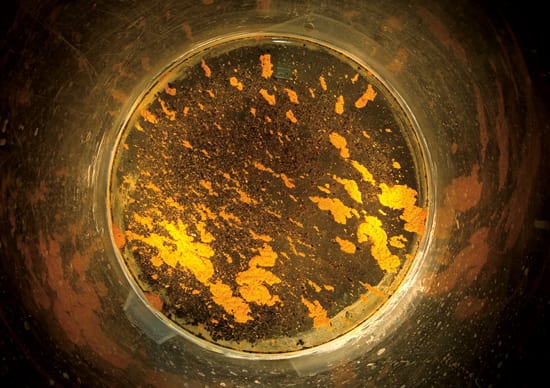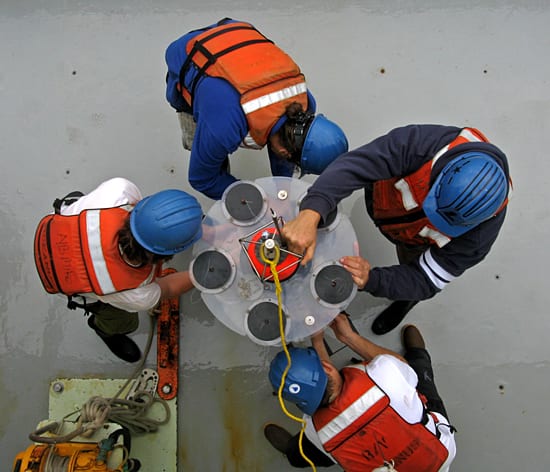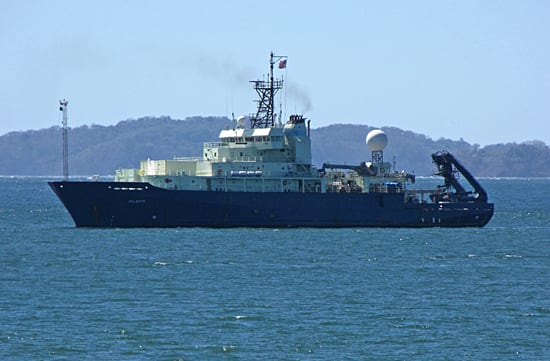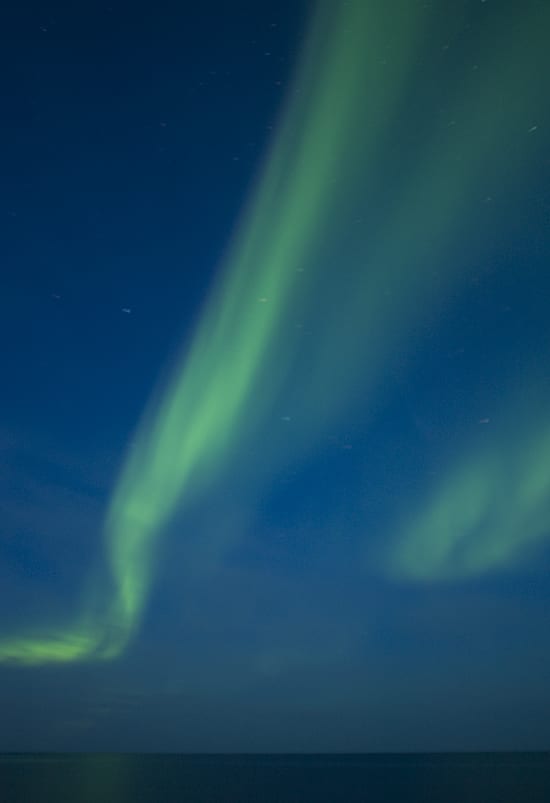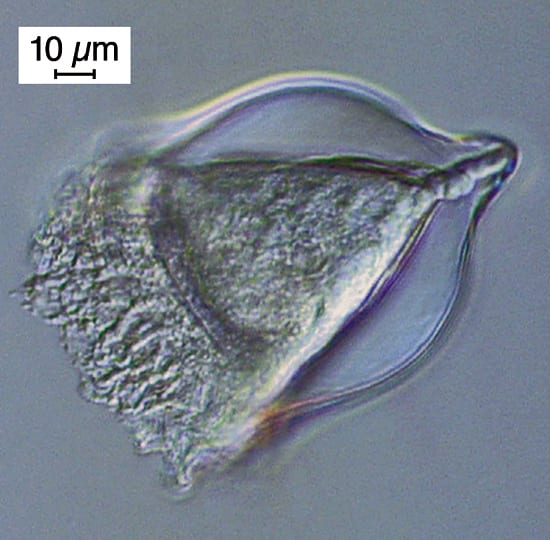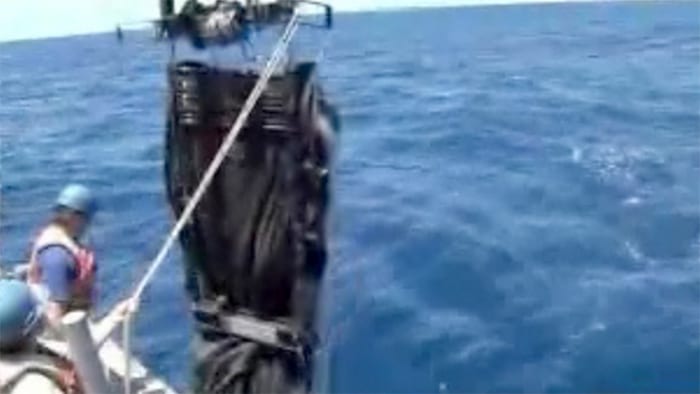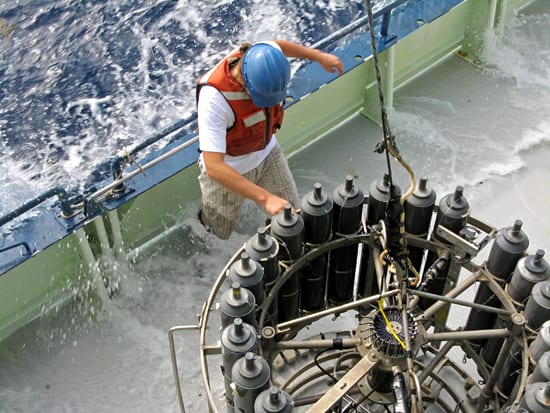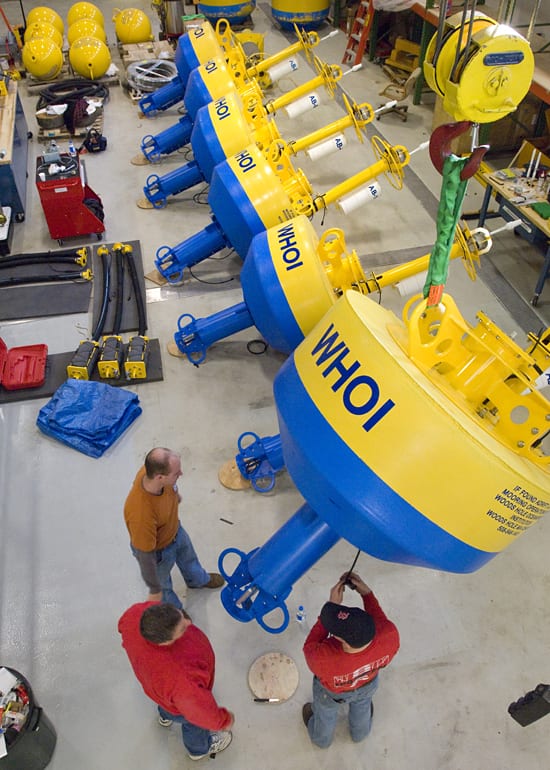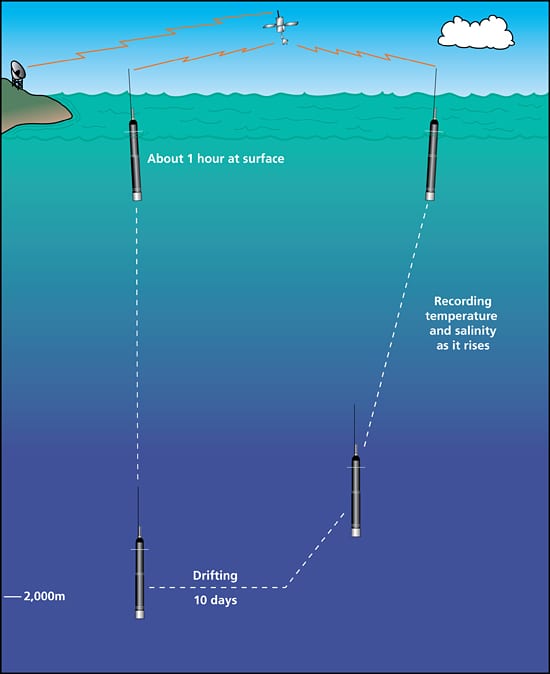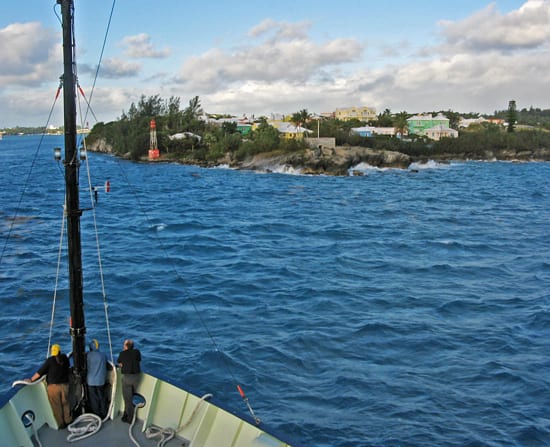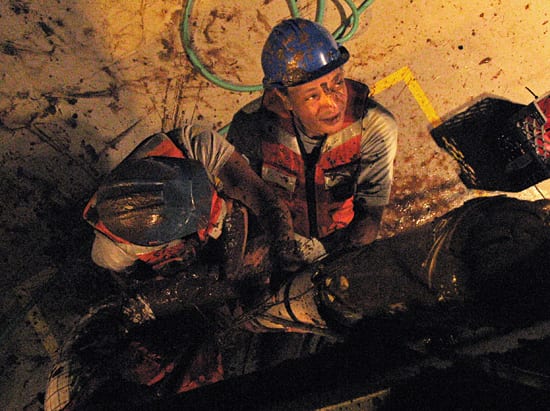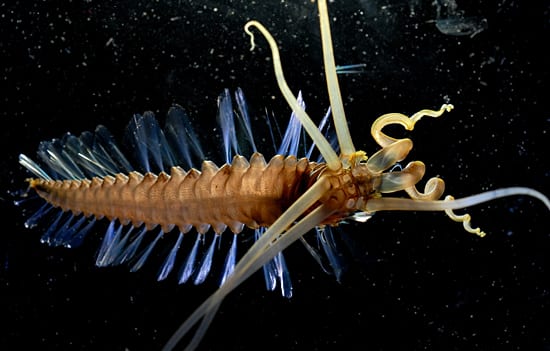Multimedia Items
From a river to the ocean
Research Associate Paul Henderson collects a water sample from the Talofofo River, Guam. Samples like this help researchers better understand the effects, both locally and globally, of coastal contaminants in…
Read MoreBarbell Bacterium
One group of bacteria—the cyanobacteria—has completely transformed Earth’s environment through their long history. Three billion years ago, ancestors of cyanobacteria infused Earth’s ancient atmosphere with the byproduct of their photosynthesis—oxygen—changing…
Read MoreGreen seeds, red tide
Harmful algae blooms (“red tide”) commonly occur in the Gulf of Maine in spring. Blooms result from the rapid reproduction of toxic algae called Alexandrium when their seed-like resting stages…
Read MoreNew ocean floor
More than two-thirds of Earth’s crust is created along seafloor spreading ridges, yet scientists rarely have a chance to observe the process is action. An event along the East Pacific…
Read MoreChanging of the guard
Sentry, a new autonomous underwater vehicle (AUV) built by engineers at WHOI, is loaded onto the R/V Tioga for testing operations during December 2007. The free-swimming underwater robot, which is…
Read MorePrecious metals from deep-sea vents
This sulfide structure is part of the “Bio 9” hydrothermal vent at 9 degrees north on the East Pacific Rise. Deep-sea hydrothermal vent systems are attracting considerable interest from commercial…
Read MoreTracking Nemo and his relatives
A pair of clownfish (Amphiprion percula) shelter among anemones in Kimbe Bay, Papua New Guinea. These coral reef fish — the same species as Disney’s famed Nemo — are the…
Read MoreTapping the ocean
WHOI summer student fellow Zack Bailey (Indiana State University) and cruise volunteer Pradeep Ranasinghage (Kent State University) collect seawater from the Niskin bottles on a CTD rosette, in June 2008.…
Read MoreGibraltar on his mind
R/V Oceanus captain Diego Mello looks out for traffic as he guides the ship into the port of Gibraltar. The research vessel stopped at Gibraltar to refuel on its way…
Read MoreCharting a polar ocean ecosystem
In March 2008 the icebreaker USCGC Healy carried researchers led by WHOI biologist Carin Ashjian to sample in nearly 200 locations in the Bering Sea. The cruise was supported by…
Read MoreSetting a Trap
A sediment trap is prepared for deployment from the research vessel Oceanus during a cruise in the Gulf of Maine. The instrument collects sinking particles on a pre-programmed schedule and…
Read MoreInto the blue
During a 2006 pilot project to study the effect of ocean currents on fish larvae spawned on coral reefs in Belize, the autonomous underwater vehicle REMUS (an acronym for Remote…
Read MorePolar Slurpee
A plexi-glass reservoir holds orange microbial material slurped up by the vacuum sampler on the towed vehicle Camper, as well as tiny black shards of volcanic glass that covered large…
Read MoreAround the clock
Like clockwork four people work together to remove samples from a sediment trap, on a cruise off Bermuda in December 2008, making a near-symmetrical picture. The samples will be brought…
Read MoreFull steam ahead
The R/V Atlantis steams through the Gulf of Nicoya off the coast of Puntarenas, Costa Rica, in February 2009. The research vessel and the Alvin submersible were in the area…
Read MoreNorthern light show
Aurora borealis lights dance in the sky above the U.S. Coast Guard icebreaker Healy during an Arctic Shelf cruise in 2004. Join a team of researchers, led by Carin Ashjian…
Read MoreHiding in plain sight
Single-celled organisms like this tintinnid are critical links in the ocean’s food web. Though ever-present in the world’s oceans, their microscopic sizes make them hard to sample and therefore hard…
Read MoreSampling plankton with the MOCNESS
Watch the launch and recovery of the MOCNESS net, catching plankton animals in the Atlantic Ocean.
Read MoreRough seas sampling
Rene Ayala of the Bermuda Institute of Oceanographic Science takes a splash while tending to a rosette sampler aboard the R/V Oceanus during a December 2008 cruise. The research was…
Read MoreWhale of a Buoy
Working in the recently renovated Coastal Research Laboratory at WHOI, engineering assistants Paul Fraser (top), Jim Dunn (center), and Kris Newhall put finishing touches on one of 10 surface buoys…
Read MoreA fleet of floats
Robotic floats — drifting instruments that measure ocean temperature and salinity — provide continuous monitoring of upper ocean conditions. Each float sinks to depths of 2,000 meters, drifts with ocean…
Read MorePicturesque port
R/V Oceanus chief mate Ethan Galac (left), bosun Clindor Cacho (center) and steward Jeff Avery (right) admire the view as the research vessel approaches St. George, Bermuda, in December 2008.…
Read MoreDirty work
Haitham Aljahdali, of King Abdullah University of Science and Technology, or KAUST (left) and Alaa Albarakati (center) of King Abdulazziz University, both in Saudi Arabia, get their hands, and everything…
Read MoreDiscovery in the Celebes
In October 2007, U. S. and Filipino scientists traveled to the Celebes Sea in Southeast Asia, searching for new species living in its deep water. When they discovered this extraordinary…
Read More
